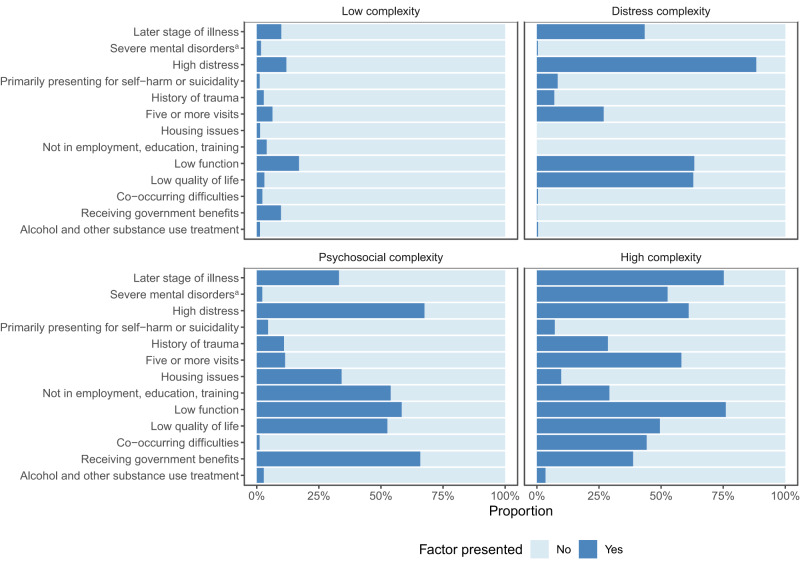Figure 2.
Results from 4-cluster solution: low complexity (n = 32,506, 39.8%); distress complexity (n = 16,251, 19.9%); psychosocial complexity (n = 17,781, 21.8%); high complexity (n = 15,084, 18.5%). Percentages of individual complexity factors in each subgroup are provided in Table S5. aPrimary or secondary diagnosis of mental disorders with more complex needs (e.g., psychotic, bipolar, personality and neurodevelopmental disorders, see Table S2).

